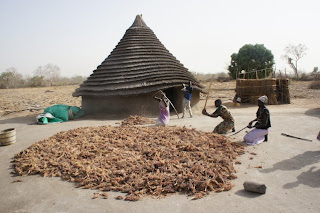"Travellers’ tales are supposed to be tall tales; but I have always found them fall short. I have nearly always felt that the real monument or landscape, when I saw it for myself, was something stranger and more striking than the indirect impression of reading. The old tale against travellers’ tales was that they magnified everything; that every lizard became a dragon and every savage tribe a race of giants. But my experience is that travellers in a strange land, especially if they have travelled in it long, tend too much to forget its strangeness. They become concerned with a dust of details, and tend to take the green lizards as casually as the green leaves. The danger is rather, I think, that a man can live in a tribe of gigantic savages, and grow to remark and record all sorts of details about their tribal taxes or their coinage of tusks or hides, and, at the end of his detailed narrative, forget even to mention that they were giants. For as there are things too big and obvious to be noticed, so especially there are things too big and obvious to be remembered."
On Travels Surprises
from All is Grist by G.K Chesterton
A book of essays published in 1931
This passage is written out by hand in the first page of Godfrey Lienhardt's* field diary from 1947. I looked at this a few times in Warrap and smiled. I thought how pleased Lienhardt must have been to find this, and how apt he must have thought it. He wanted to start his research with a reminder of it. Shame about the use of the word 'savages', other than that I like it a lot. And it makes a valuable point about scale in research and writing...a difficult balance to strike.
*Author of 'Divinity and Experience: The Religion of the Dinka' a classic in anthropology of religion published in the 1960s
On Travels Surprises
from All is Grist by G.K Chesterton
A book of essays published in 1931
This passage is written out by hand in the first page of Godfrey Lienhardt's* field diary from 1947. I looked at this a few times in Warrap and smiled. I thought how pleased Lienhardt must have been to find this, and how apt he must have thought it. He wanted to start his research with a reminder of it. Shame about the use of the word 'savages', other than that I like it a lot. And it makes a valuable point about scale in research and writing...a difficult balance to strike.
*Author of 'Divinity and Experience: The Religion of the Dinka' a classic in anthropology of religion published in the 1960s









